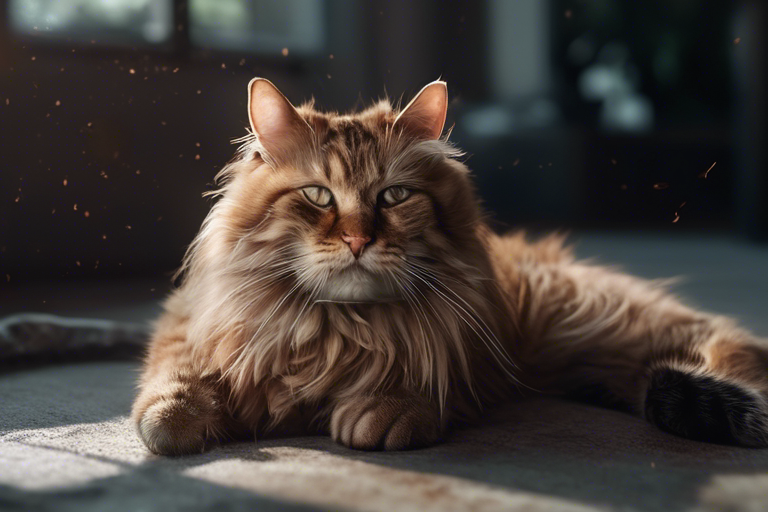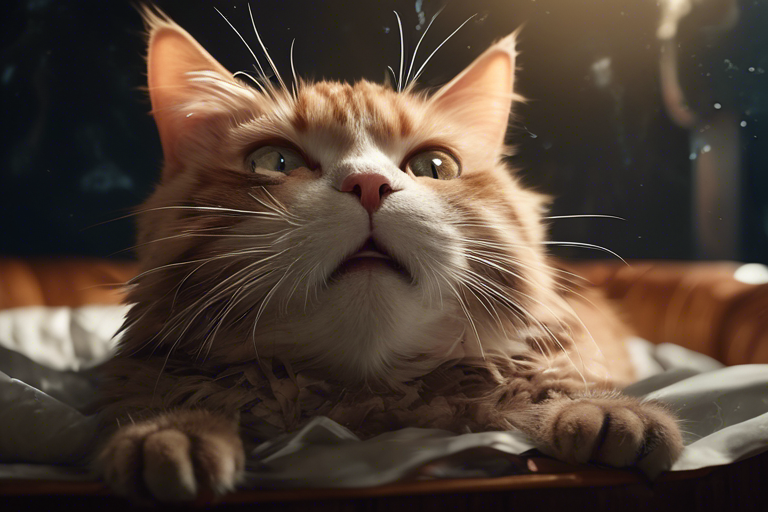If you’re a cat owner, you may have wondered why your feline friend sometimes exhibits strange behaviors, such as trying to suffocate you while you sleep. While this may seem like an alarming thought, it’s essential to understand the reasons behind these actions and how to ensure the safety of both you and your cat. In this comprehensive guide, we will explore the potential causes of this behavior and provide practical tips to prevent any harm. So, let’s dive in and unravel the mystery of why cats might try to suffocate their owners.
Understanding the Concern: Can Cats Really Suffocate Their Owners?
The idea that a cat could suffocate its owner while they sleep may sound far-fetched, but it’s a concern that many cat owners share. While it’s true that cats can sometimes exhibit unpredictable behavior, it’s important to separate fact from fiction. In this section, we’ll delve into the origins of this myth and debunk any common misconceptions.
The Origin of the Myth
Cats are known for their curious and flexible nature, often finding unique sleeping positions near their owners’ heads. This behavior, combined with the occasional kneading or pawing at the face or neck, has led to the myth that cats can suffocate their owners. However, it’s important to note that these actions are typically harmless and rooted in affection and seeking attention.
Debunking Common Misconceptions
While the thought of a cat suffocating its owner may be frightening, it’s crucial to understand that it is an extremely rare occurrence. Cats are relatively lightweight and wouldn’t be able to exert enough pressure to stop a person from breathing. Additionally, most cats are instinctively wary of faces and would avoid covering them. They are also likely to move or stir if they or their owner become uncomfortable during sleep. Cats are highly adaptable creatures capable of learning from their experiences, so if a cat accidentally causes harm, they are unlikely to repeat the behavior.
Feline Behavior and Sleeping Habits
To better comprehend why cats exhibit certain behaviors while sleeping, it’s essential to understand their natural instincts and sleeping habits. By gaining this insight, you can develop a stronger bond with your pet and minimize any potential risks.
Cats’ Love for Sleep
Cats are renowned for their love of sleep, often dozing off for up to 16 hours a day. This behavior stems from their instincts as natural predators and the need to conserve energy for hunting. Additionally, as crepuscular animals, cats are most active during dawn and dusk, leading them to sleep during the day to prepare for their evening adventures.
Why Cats Sleep on Their Owners
If you’ve ever woken up to find your cat sleeping on your pillow, you might wonder why they choose to do so. There are various reasons why cats enjoy sleeping in close proximity to their owners:
- Social Animals: Cats are social creatures that crave closeness with their owners.
- Security and Comfort: Cats feel secure when they are near their humans and enjoy the warmth and comfort provided by their bodies.
- Territorial Instincts: Some cats consider their owner’s bed or sleeping area as their own territory, leading them to seek out close proximity.
However, it’s important to note that not all cats enjoy sleeping with their owners. Cats are independent animals and may prefer their own space. If your cat doesn’t want to sleep with you, respect their boundaries and provide them with a comfortable alternative sleeping area.

Assessing the Risks: Can a Cat Suffocate You in Your Sleep?
While the risk of suffocation from a cat sleeping too close to your face is minimal, it’s still crucial to understand the factors that can influence this risk. By being aware of these factors, you can take appropriate precautions to ensure the safety of both you and your pet.
Factors Influencing the Risk
Several factors can impact the risk of suffocation if you choose to sleep with your cat:
- Size and Weight: Larger cats pose a higher risk of accidental suffocation due to their increased mass and potential for applying more pressure to the face and neck.
- Cat Behavior: Cats that knead, paw, or press against their owner’s face may pose a higher risk of accidental suffocation by inadvertently covering the nose and mouth.
- Owner Behavior: Heavy sleepers, individuals under the influence of medication or alcohol, or those with respiratory issues may be more vulnerable to accidental suffocation as they may not wake up or move if their breathing is obstructed.
Real-Life Incidents and Statistics
While cat suffocation is rare, there have been documented cases of it occurring. A study conducted by the Centers for Disease Control and Prevention reported 11 suffocation deaths caused by cats between 2005 and 2013 in the United States. However, it’s essential to consider that many of these incidents involved infants and young children, who are generally more vulnerable to suffocation. Parents should supervise their children around pets and ensure they sleep in a safe environment.
In conclusion, while the risk of a cat suffocating its owner during sleep is low, it’s important to be aware of the potential danger. If you choose to sleep with your cat, taking precautions such as maintaining a well-ventilated bedroom and ensuring your cat sleeps at a safe distance from your face is crucial. By being knowledgeable and responsible, you can enjoy a peaceful night’s sleep with your furry friend.
Preventing Potential Dangers
If you’re concerned about the possibility of your cat accidentally causing harm while you sleep, there are steps you can take to ensure everyone remains safe. Creating a safe sleep environment and training your cat to sleep elsewhere can significantly reduce the risks associated with this behavior.
Creating a Safe Sleep Environment
To create a safe sleeping space for both you and your cat, consider the following tips:
- Invest in a Separate Bed: Provide your cat with a designated bed or sleeping area of their own.
- Separate Blanket or Sheet: Use a separate blanket or sheet for your cat to sleep on.
- Physical Barrier: Place a pillow or a rolled-up towel between you and your cat to create a physical barrier.
Training Your Cat to Sleep Elsewhere
If your cat has a habit of sleeping too close or pawing at your face and neck, training them to sleep elsewhere can be beneficial. Positive reinforcement techniques can be effective in encouraging your cat to sleep in their designated bed or area. Provide treats, toys, and positive attention when your cat sleeps where you want them to, reinforcing the desired behavior.
When to Seek Professional Help
While most cats have no malicious intent, some may exhibit behavior issues or have underlying medical problems that cause them to behave in ways that pose a risk. If you notice any of the following signs, it may be time to seek professional help from a veterinarian or animal behaviorist:
- History of Aggressive Behavior: If your cat has a history of aggressive behavior or has harmed you or others.
- Sudden Changes in Sleeping Habits: If your cat’s sleeping habits have suddenly changed without any apparent reason.
- Medical Conditions: If your cat has a medical condition that may impact their behavior or ability to sleep safely.
By addressing these concerns with the help of a professional, you can ensure the well-being of both you and your cat.
In summary, while the fear of a cat suffocating its owner may seem irrational, it’s essential to be aware of the risks involved and take necessary precautions. Understanding your cat’s behavior, establishing boundaries, and creating a safe sleep environment can help foster a healthy and peaceful relationship with your furry companion. Remember, most cats are loving and affectionate pets who bring joy and companionship to their owners, and by being informed and responsible, you can continue to enjoy the many benefits of feline companionship.






